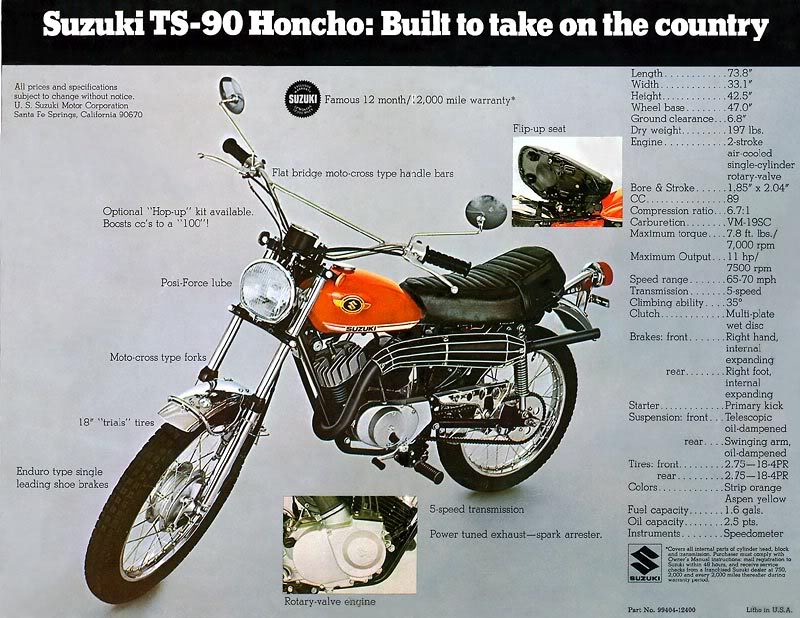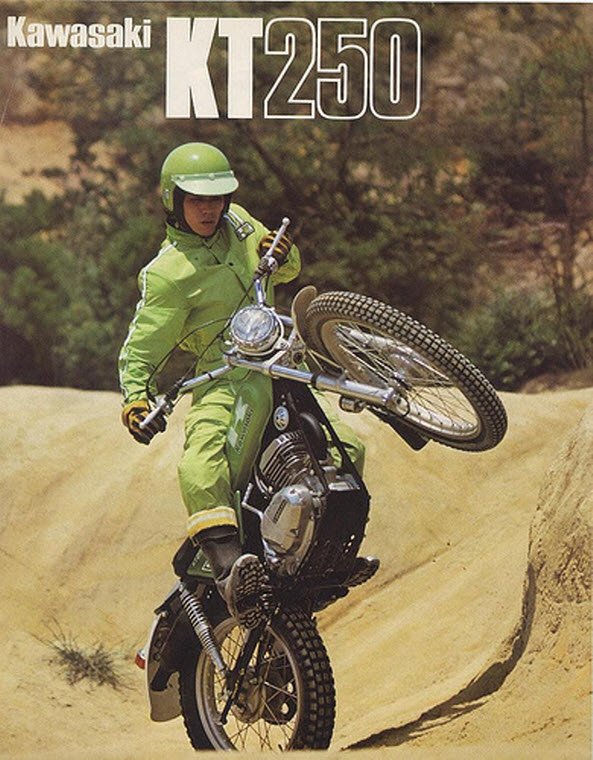 Marketing executives are a sadistic bunch. Their sole existence is to convince people that they need something, even if they lack the discretionary income required to purchase it. Down on your luck and short of cash? Behind on your mortgage? Struggling with a shopping addiction? Who cares, you need this. And when people are already passionate about something it’s usually a soft sell. Nowhere is this more conspicuous than in the motorcycle industry.
The evidence is plastered all over Craigslist. Bikes seem to be sold for three primary reasons: upgrade, outgrown, or unused – the classified ads trifecta. In reality it’s really only two reasons: they got talked into buying something they didn’t need, or have been talked into buying more.
Buying something you didn’t need can be excusable. A moment of weakness perfectly intersecting with an impulsiveness that coincides with a well delivered sales pitch and viola! You suddenly own a motorcycle you might ride twice a year.
Outgrowing something is obviously excusable. This is natures way of telling you that, at 6 feet tall and 30 years of age, it’s time to ditch the XR100. Just as long as you remember it’s not that the bike isn’t fun, it’s just that the bike doesn’t fit. I remind myself of this every time I take my 8-year-old son out to ride his PW80 and ‘warm it up’ for him by doing a few laps. I might look like a Shriner or reject from some B-rated circus, but the fun factor of little bikes is pretty big.
Marketing executives are a sadistic bunch. Their sole existence is to convince people that they need something, even if they lack the discretionary income required to purchase it. Down on your luck and short of cash? Behind on your mortgage? Struggling with a shopping addiction? Who cares, you need this. And when people are already passionate about something it’s usually a soft sell. Nowhere is this more conspicuous than in the motorcycle industry.
The evidence is plastered all over Craigslist. Bikes seem to be sold for three primary reasons: upgrade, outgrown, or unused – the classified ads trifecta. In reality it’s really only two reasons: they got talked into buying something they didn’t need, or have been talked into buying more.
Buying something you didn’t need can be excusable. A moment of weakness perfectly intersecting with an impulsiveness that coincides with a well delivered sales pitch and viola! You suddenly own a motorcycle you might ride twice a year.
Outgrowing something is obviously excusable. This is natures way of telling you that, at 6 feet tall and 30 years of age, it’s time to ditch the XR100. Just as long as you remember it’s not that the bike isn’t fun, it’s just that the bike doesn’t fit. I remind myself of this every time I take my 8-year-old son out to ride his PW80 and ‘warm it up’ for him by doing a few laps. I might look like a Shriner or reject from some B-rated circus, but the fun factor of little bikes is pretty big.
 Upgrading is where the motivation can really be influenced by suggestive marketing. I’m not talking about people who ‘upgrade’ from a motocross bike to a dual sport (or vice versa) or from a mid ’70s bike to a late ’90s model. I’m referring to recreational riders that believe upgrading their 4-year-old bike is going to drastically improve their overall experience or that buying a brand that costs 30% more is going to deliver 110% more fun (which may or may not be mathematically feasible).
That is the crux of the what-bike-to-buy debate for the recreational user – figuring the fun factor. Is buying brand new or spending thousands more really going to convert the added cost to extra fun or improved performance?
A similar debate can be made about displacement: as any devout disciple of single track will tell you, less can truly be more. On the other end of the spectrum most ADV riders will tell you than more is, in fact, more.
Multi-time Tour de France winner Lance Armstrong wrote an entire book that explains It’s Not About the Bike, then went on to prove it by getting popped for performance enhancing drugs. A quick word of caution about performance enhancing drugs – they are expensive and hard to come by; street level drugs are much more cost-effective and readily available.
Upgrading is where the motivation can really be influenced by suggestive marketing. I’m not talking about people who ‘upgrade’ from a motocross bike to a dual sport (or vice versa) or from a mid ’70s bike to a late ’90s model. I’m referring to recreational riders that believe upgrading their 4-year-old bike is going to drastically improve their overall experience or that buying a brand that costs 30% more is going to deliver 110% more fun (which may or may not be mathematically feasible).
That is the crux of the what-bike-to-buy debate for the recreational user – figuring the fun factor. Is buying brand new or spending thousands more really going to convert the added cost to extra fun or improved performance?
A similar debate can be made about displacement: as any devout disciple of single track will tell you, less can truly be more. On the other end of the spectrum most ADV riders will tell you than more is, in fact, more.
Multi-time Tour de France winner Lance Armstrong wrote an entire book that explains It’s Not About the Bike, then went on to prove it by getting popped for performance enhancing drugs. A quick word of caution about performance enhancing drugs – they are expensive and hard to come by; street level drugs are much more cost-effective and readily available.
 Moving beyond the bike this same mentality can easily be applied to where you ride. Exploring new areas and wandering past the horizon line is great, but it’s not absolutely necessary to tap into your inner Sherpa to find adventure.
Adventure is predominately derived from risk. If it were only about exploring new places many of us would be addicted to Royal Caribbean Cruises (admittedly, this can be risky as well – cruise ships are renowned for including norovirus free of charge). But statistically speaking, you’re more likely to injure yourself on a local trail you’ve hammered 100 times before.
When it comes down to it, you don’t need the Transcontinental Trail. The simple joy of navigating through the dirt on a motorcycle can be a visceral experience – even without exotic landscapes. There are no standards to achieve the fun factor.
Professional racers churn out lap after lap on the same practice tracks, then fly off to race on the same circuit year after year. Which is admittedly one of the contributions to burnout. I believe the average weekend warrior riding an average bike is more likely to experience a bigger fun factor than any professional rider if for no other reason than that they’re still learning.
One of the great joys of being an average weekend recreational rider is constantly being able to redefine the standards that I hold myself to. There’s no governing body to tell me which class or division I qualify for and my self-esteem as a rider isn’t hinged upon points or place. While competitive riding (on any level) is exhilarating in itself, the point of it is to try to win. At some point in the arc of any racer’s career, results either wain or simply never come to fruition and the amount of effort (or financial investment) required to maintain any measurable success becomes work. The thing that was once so beloved has now become a burden.
My expectations during any given excursion into the dirt are fairly meager. I expect to have several missed shifts and to possibly tip over while at a complete stand still. I also expect to stall my bike at least once. Usually this is accomplished by accidentally hurling myself into a corner at warp speed, then locking up the brakes and reciting the Lord’s Prayer over and over while strenuously clenching my butt cheeks. The end result finds me blowing straight through the turn, then frantically kicking my stalled bike over in a hurried attempt to restart it before witnesses happen along.
But above all, I expect to have FUN. A few crash-fests and inconvenient break downs notwithstanding, I am rarely disappointed. All I need is my 12-year-old Suzuki and some decent dirt.
Moving beyond the bike this same mentality can easily be applied to where you ride. Exploring new areas and wandering past the horizon line is great, but it’s not absolutely necessary to tap into your inner Sherpa to find adventure.
Adventure is predominately derived from risk. If it were only about exploring new places many of us would be addicted to Royal Caribbean Cruises (admittedly, this can be risky as well – cruise ships are renowned for including norovirus free of charge). But statistically speaking, you’re more likely to injure yourself on a local trail you’ve hammered 100 times before.
When it comes down to it, you don’t need the Transcontinental Trail. The simple joy of navigating through the dirt on a motorcycle can be a visceral experience – even without exotic landscapes. There are no standards to achieve the fun factor.
Professional racers churn out lap after lap on the same practice tracks, then fly off to race on the same circuit year after year. Which is admittedly one of the contributions to burnout. I believe the average weekend warrior riding an average bike is more likely to experience a bigger fun factor than any professional rider if for no other reason than that they’re still learning.
One of the great joys of being an average weekend recreational rider is constantly being able to redefine the standards that I hold myself to. There’s no governing body to tell me which class or division I qualify for and my self-esteem as a rider isn’t hinged upon points or place. While competitive riding (on any level) is exhilarating in itself, the point of it is to try to win. At some point in the arc of any racer’s career, results either wain or simply never come to fruition and the amount of effort (or financial investment) required to maintain any measurable success becomes work. The thing that was once so beloved has now become a burden.
My expectations during any given excursion into the dirt are fairly meager. I expect to have several missed shifts and to possibly tip over while at a complete stand still. I also expect to stall my bike at least once. Usually this is accomplished by accidentally hurling myself into a corner at warp speed, then locking up the brakes and reciting the Lord’s Prayer over and over while strenuously clenching my butt cheeks. The end result finds me blowing straight through the turn, then frantically kicking my stalled bike over in a hurried attempt to restart it before witnesses happen along.
But above all, I expect to have FUN. A few crash-fests and inconvenient break downs notwithstanding, I am rarely disappointed. All I need is my 12-year-old Suzuki and some decent dirt.





